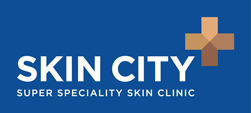Spider veins (also called telangiectasias) are clusters of tiny blood vessels that develop close to the surface of the skin. They are often red, blue, or purple; and they have the appearance of a spider web. They are commonly found on the face and legs.
Causes of Spider veins
- Heredity
- Occupations that involve a lot of standing, such as nurses, hairstylists, teachers, and factory workers
- Obesity
- Hormonal influences of pregnancy, puberty, and menopause.
- The use of birth control pills.
- Postmenopausal hormonal replacement
- A history of blood clotting problems
- Conditions that cause increased pressure in the abdomen such as tumors and constipation.
- Other reported causes include trauma or injury to the skin, previous vein surgery, and exposure to ultraviolet rays.
Varicose veins and spider veins develop more often in women than in men. They increase in frequency with age. An estimated 30% to 60% of adults have varicose veins or spider veins.
Symptoms of Spider Veins
The most obvious sign of spider veins is their web-like appearance on the skin. These veins can be red, blue, or purple. Other symptoms include:
- an uncomfortable feeling in the legs
- swelling
- rash
- throbbing, cramping, or aching
- restless legs
- itching around the veins
- skin ulcers
Treating Spider Veins
Unless you are experiencing pain or other symptoms, spider and varicose veins don’t require treatment. If you have symptoms or would like the veins removed for aesthetic reasons, treatment options include:
- Support stockings: Compression stockings put pressure on your veins and relieve discomfort. These can be purchased over-the-counter or by prescription.
- Sclerotherapy: This common treatment is used for spider veins and varicose veins. In this procedure, a doctor injects a chemical into your veins, causing them to seal shut. With blood flow stopped, the vein becomes scar tissue and eventually fades. This treatment must be repeated every four to six weeks.
- Laser treatments: This procedure uses a laser to send bursts of light through your skin and into your vein, making the vein fade.
- Surgery: Various surgical techniques are generally reserved for the largest and most unsightly veins.


